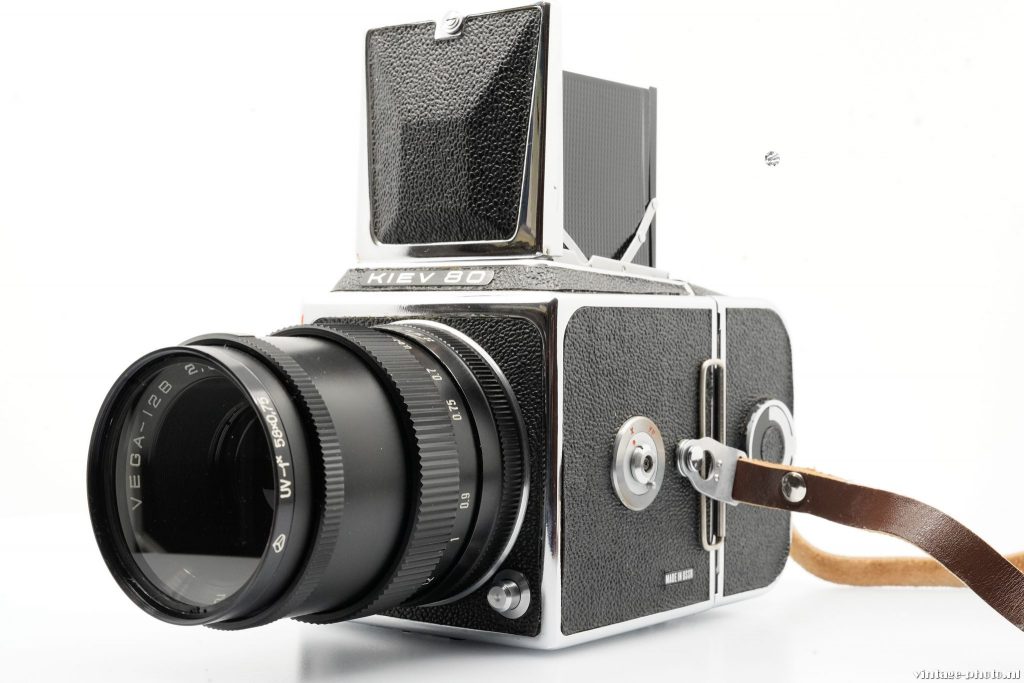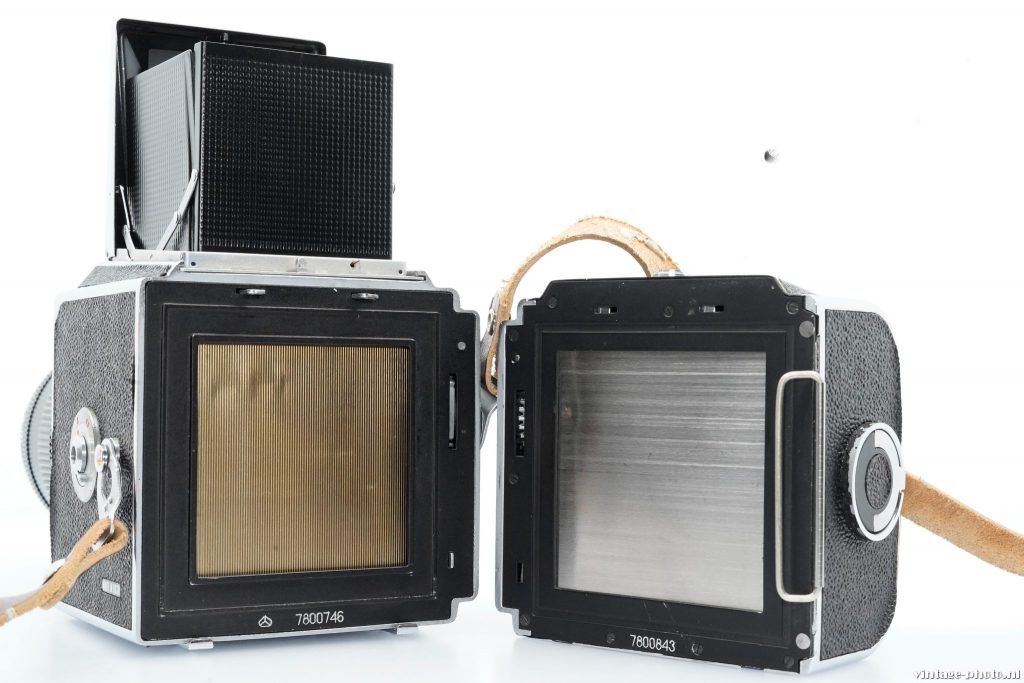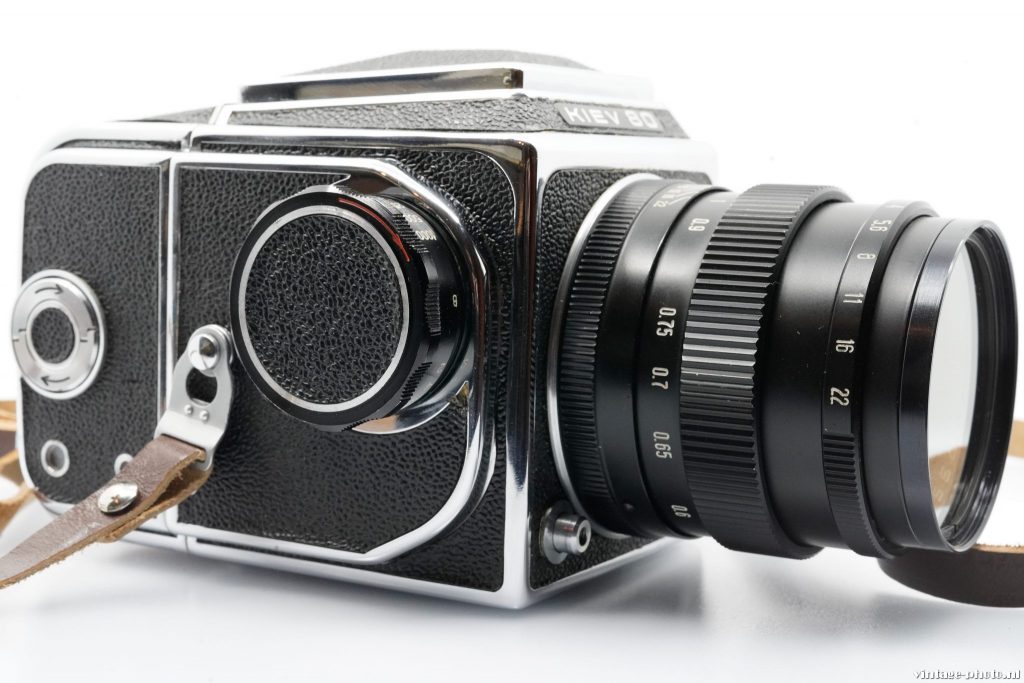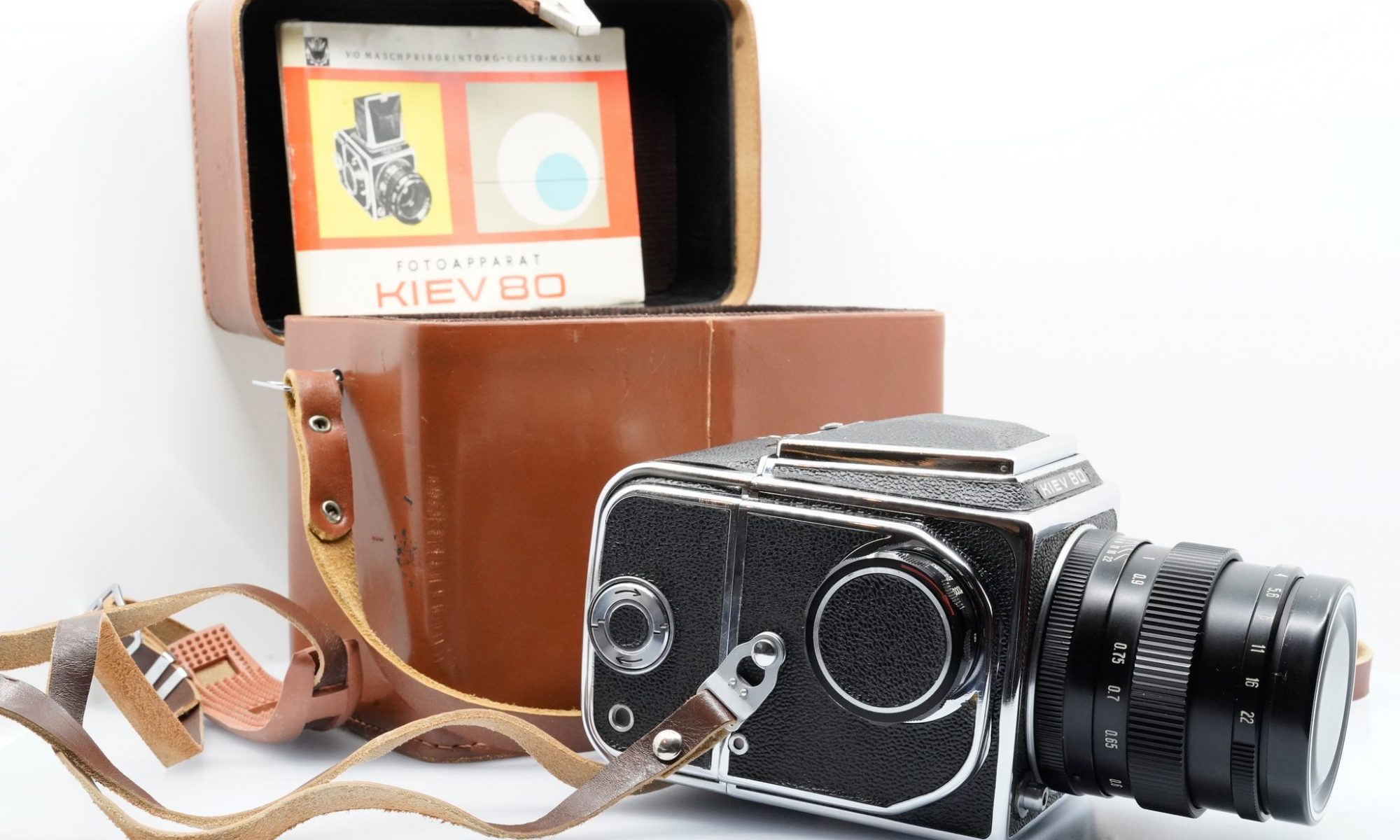Owners call it the Hasselbladsky, the Russian clone of the famous 1600F. We write the end of the 1950s when the Salyut C sess the light of day in the Kiev factories. With confidence the medium sized camera exports to the West, but soon it turns out to be a love-hate relationship. Although the camera is budget friendly priced, it also seems to be a matter of luck to get one that is actually working.

The”Salyut” name was soon after 1957 changed into Kiev and even in Zenith (the same name the SLR’s got). The 120 film camera was labelled professional in the West due to the very expensive Hasselblad. And this came close in the looks, it had interchangeable backs, an own mount for a whole series of wide and tele lenses and an overall sturdy feel. It looked like a original Hasselblad design and even felt like one. After “Salyut C” the camera model evolved into “Kiev 80” but it took some more years before the most famous and best sold “Kiev 88” cae into mass production.

I got my hands on the less common and hard to find original Kiev 80, but the only difference with the 88 is the lack of a hot shoe (the 80 has a PC-sync socket for 1/30s Flash synchronization). The specs of the camera can be summed up easily. It is an all manual camera with a mechanical focal plane shutter that performs very solid in the speed range of 1/1000 to B. Cocking the shutter is by turning the bog knob on the right, it also winds the film. The charme of this camera are all the odd noises: when cocking and film winding and also the shutter release, futuristic sounds that are normal.

Once the back is loaded with 120 film, it can be attached to the body. But before doing anything, make sure that the shutter is always cocked with …whatever you are doing with the camera. Do not remove a back, do not remove a lens without cocking. KGB rule so to speak. Just do it, do not think. If you do not, things will not work, be damaged, nobody knows exactly why, but the complicated mechanism is vulnerable. Loading your first film, be sure to first learn by this instruction from the fansite of ‘Kievaholic Klub’ . Otherwise there is a big chance you waste a film, because you have set the counter not correctly.

The big, but smooth focussing Vega 12B 90 mm F 2.8 – F 22 lens is the standard prime lens for the Kiev 80. It has a minimum focussing distance of 0,6 meter, which is very common for these types of lenses. Focussing by the way is done with a waist finder that pops up at the top of the body and has a micro prism for exact focussing. Although it is a quite dark, upside down mirrored image, focussing goes pretty well with the lens. Releasing and changing lens is performed by the left iron knob on the front, next to the shutter release knob. You can only release the shutter by moving out the ‘dark slide’ from the filmback, similar to the old plate camera’s and for instance the interchangeable backs of Zeis Ikon camera’s.

The low price of the Kiev medium format cameras has attracted many photographers. Like the also available Mamiya, Bronica and Pentax the Kiev made a name for itself in the more cheaper price range of medium format. But the Kiev/Arsenal plant is known to have generally poor quality control and buyers have reported receiving cameras with small cosmetic or functional defects, but these vary from camera to camera.
All cameras however, still have a number of quirks that no simple servicing will remove once it breaks. The most notable quirk is that the shutter speed on some of the original Kiev 88 cameras should only be changed after cocking the shutter (spring-loading the shutter mechanism and advancing the film). Changing the shutter speed on an un-cocked camera will damage the timing mechanism. There are also mixed reports that the shutter speed dial should be turned only clock-wise, never anti-clock-wise. And there is the manual setting of the filmcounter, which -if forgotten- will not wind the film.

Enough criticism. There is a very positive side to Kiev 80. Owners report velvet soft photos, beautiful circular bokeh, so no hard, stabbing sharpness, but more atmosphere that makes you relive the 60’s in your pictures. Once you hold the Kiev 60 in your hand, you immediately feel invited to take pictures with it. The camera feels solid and can take a beating. You can handle the buttons firmly, and with holding the instructions in your mind the camera does precisely what you want. It is indeed a Sovjet trait, stiff, but with love.

